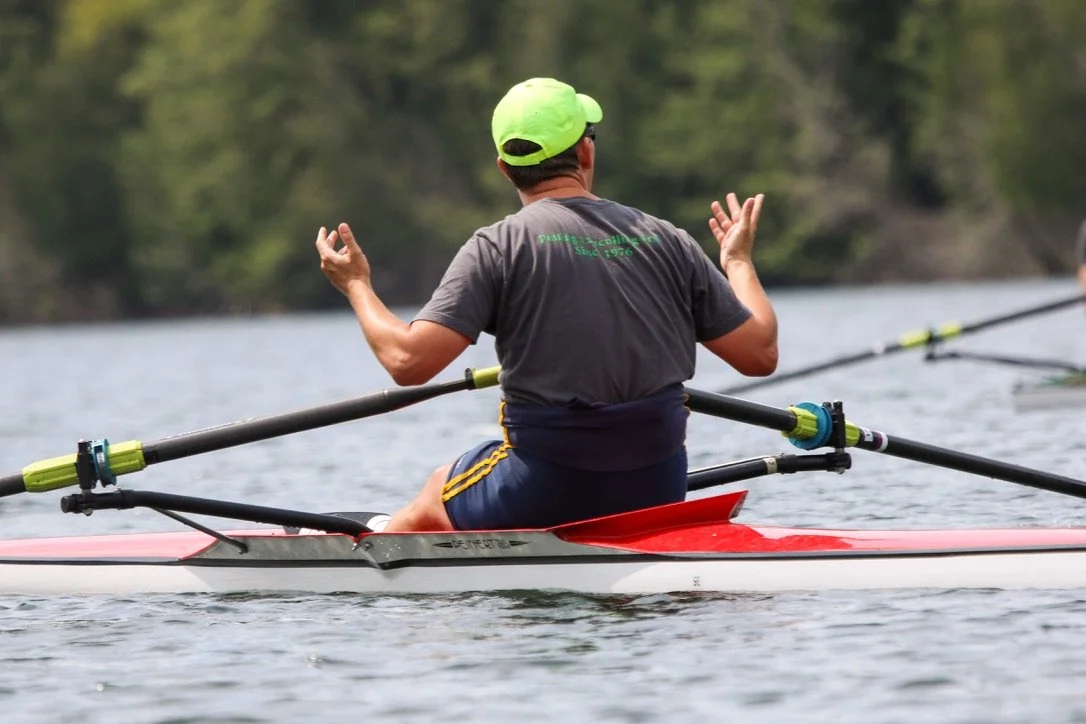The Quickest Way, and The Best Way
The idea that the quickest way to do something isn’t always the best way to do it isn’t something likely to be unfamiliar to anyone. Actually knowing how to put it to use in an unfamiliar situation, though, can be tricky, particularly when the established orthodoxy of your activity follows the more impatient path.
This applies to rowing, sculling, and coaching in myriad ways, two of which I’ll explore here today. First, there is the matter of the athletes’ and their coaches’ desire to be fast right away. It is nearly universally accepted throughout our sport that superior fitness and the willingness to out-work your opponent are non-negotiable. Without those elements, you’re lost. Where we get ourselves in the soup, though, is with the faulty logic that usually follows: if that is true (and it is), we are faced with the ever-present temptation to take the shortest path to speed today, or next week, or this season. We get seduced into the belief that “win now” is the paramount objective, so we adopt “Just Pull Harder” as a mantra and we shoehorn the fittest people into boats and celebrate when they defeat opponents who are less fit, and that reinforces the belief that the path to mastery is always more fitness. We prioritize getting fitter and stronger, selection of crews, and the meat headed mandate of WIN NOW at the expense of taking the long route to mastery of the stroke, understanding of how the boat travels through the water, and other subtleties because they take longer than improving fitness and applying more force accordingly. Unfortunately, finding and/or developing the fittest crew because we have races on the horizon in a few days, weeks, or even months eventually hits a glass ceiling when our crew meets the crew that took the long view and actually learned to row well. Faster erg times and survival of the fittest (literal definition) result in winning sooner and losing later. Small boats and a devotion to mastery result in faster boats in years to come. It is the impatience of coaches and athletes alike that holds us back from truly transcendent results.
Likewise, the quickest and most immediately effective way for a coach to establish control of a team is through fear-based coaching. I don’t mean the fear in the fight-or-flight, physical sense, but rather the fear of failure, the fear of being regarded as a lesser athlete, the fear of not making the boat/pleasing the coach, and so forth. At its simplest and seemingly most benign, this may even be reduced to the fear of losing the coach’s support and approval, and that isn’t really as benign as it appears at first blush. How many athletes do we unintentionally prevent from reaching their potential because we regarded them with indifference? The bedrock question here is this: Do we support athletes because they succeed, or do athletes succeed because we support them? Fear based coaching lives in the first model, supportive coaching in the latter. And yet most every coach has observed that an athlete playing with confidence almost always performs at a much higher level than the very same athlete playing with a lack of confidence. We are too ready to believe that champion athletes are those who were born with unshakeable confidence, and so we employ the fear-based approach of testing our athletes to see whose confidence can be shaken rather than finding ways to instill it and enhance it where it already resides. In the long run, love produces more champions than fear does, and by love I don’t mean rainbows and unicorns and let’s all hold hands and skip. On the contrary, supportive coaching rests in sharing your faith that every one of your athletes is tougher and more resilient than she knows. Fear gets it done quicker. Support gets it done better.
